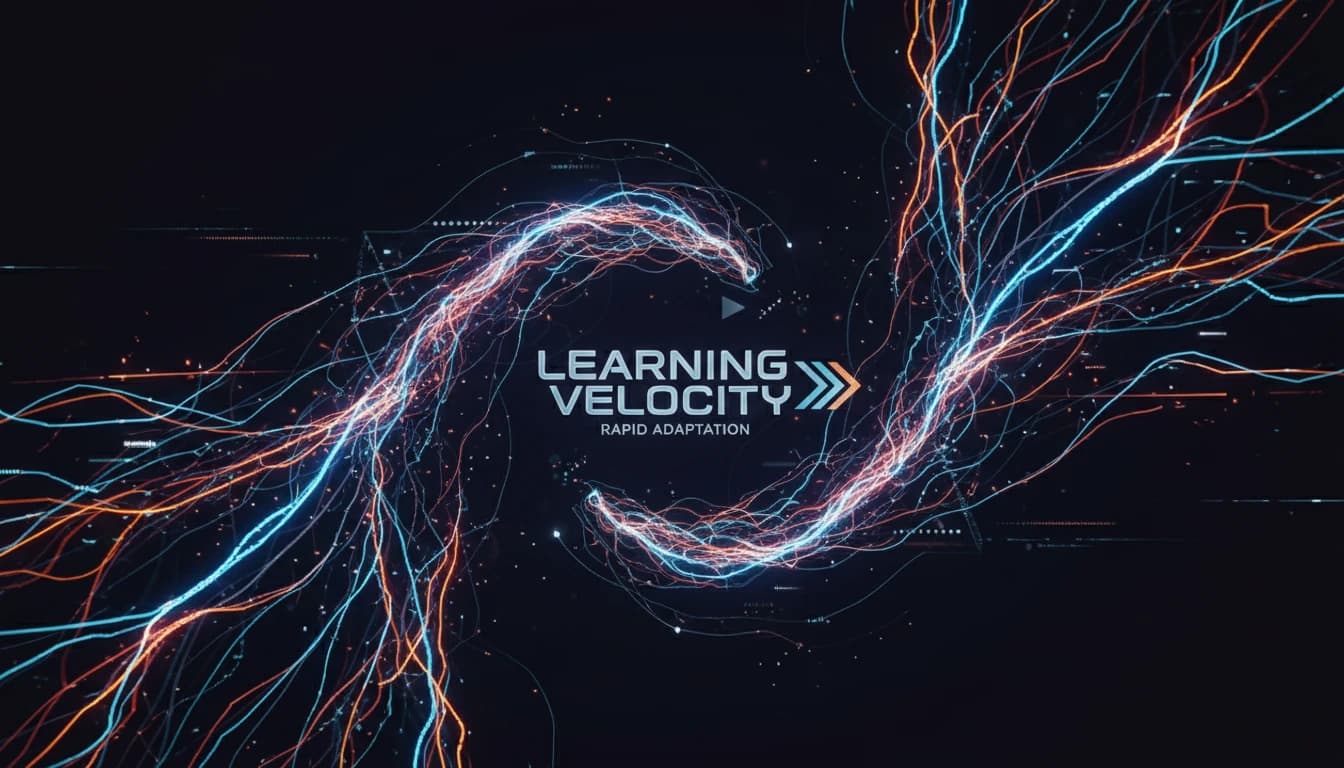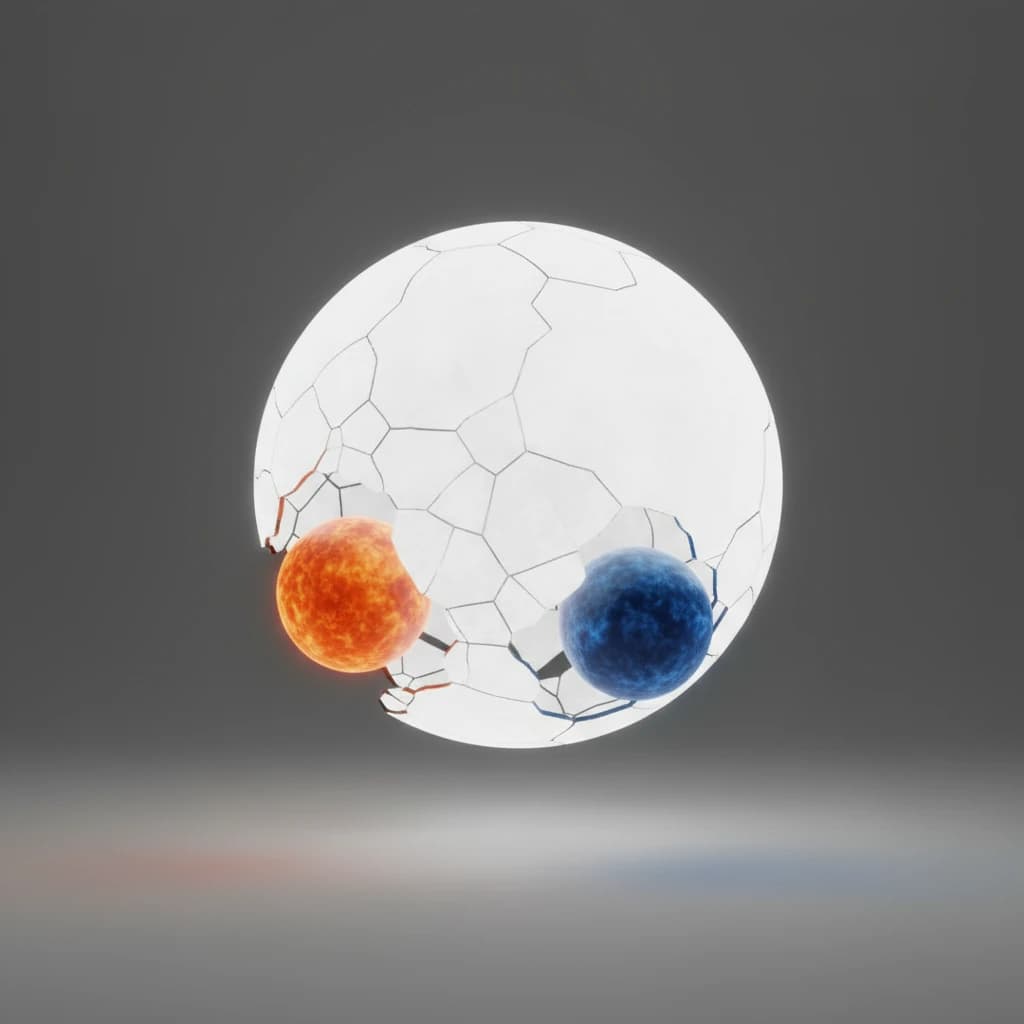AI Coding Assistants: Speed vs. Verifiable Trust for Enterprise
FREEAre you still chasing marginal gains in code generation speed, unaware that the real battle for AI coding assistant dominance has already pivoted? The future isn't just about writing code faster; it's about verifying its integrity at an unprecedented scale, making current benchmarks obsolete.
Are Developers Chasing the Wrong Metric When Comparing AI Coding Assistant Tools?

The prevailing discourse around AI coding assistants has been a misguided obsession with a single metric: speed. Developers and tech leaders compare massive context windows, debate the merits of native IDE integration from tools like Cursor, and celebrate marginal gains in code completion speed. Developers have fixated on pure velocity—shaving seconds off every function written—as the ultimate metric of success.
However, this relentless pursuit of speed is not just a distraction; it's a critical vulnerability. While tools like GitHub Copilot and Claude Code have undeniably made developers more productive, they’ve also introduced a new, high-stakes problem for the enterprise: How do you trust, let alone audit, millions of lines of machine-generated code? Chasing raw speed without a framework for verification is like building a faster engine for a car with no brakes.
This is where the entire evaluation metric is beginning to pivot. The new benchmark isn't speed; it's verifiable trust. The most valuable assistant is no longer the one that generates code the fastest, but the one that can prove its output is secure, compliant, and logically sound. For any organization operating in a regulated industry or with a serious security posture, this shift is non-negotiable.
This challenge is now a critical bottleneck for enterprise security and deployment. A recent Cloudsmith report revealed that a staggering 66% of organizations only trust AI-generated code after a manual review. This completely negates the productivity gains, turning a powerful automation tool into a generator of high-volume, high-risk work for already-strained security teams.
As a result, the conversation is moving from the developer’s terminal to the security team's compliance dashboard. The question is no longer just, "How fast can it code?" but rather, "Can it produce an audit trail that satisfies our CISO?" This fundamental change redefines what makes an AI coding assistant truly enterprise-ready, pushing features like simple API call logs toward obsolescence.
How is Google Antigravity's Artifact-Based Verification Redefining Enterprise Security?

Unlike most AI coding assistants that merely generate code, Google Antigravity extends its capabilities to verify it. Its defining feature is a process called artifact-based verification, which fundamentally changes the output from a simple code snippet to a comprehensive, auditable package. This is the crucial innovation setting a new standard for enterprise-grade AI development.
Instead of just returning a function, Antigravity's autonomous agents produce two things: the code itself and a detailed reasoning artifact. This artifact is essentially the AI's work journal. It documents the natural language prompt, the steps the agent took to interpret it, the dependencies it considered, and the security principles it applied. For a security team, this is revolutionary.
This approach directly addresses the trust gap. Instead of a black box that spits out code, you get a glass box that shows its work. The necessity for this verifiable transparency is underscored by a 2025 Cloudsmith report, which found that 66% of organizations only trust AI-generated code after manual review. Antigravity's detailed reasoning artifacts directly address this by providing a clear, machine-readable trail of evidence, proving code was generated thoughtfully and securely, thus automating trust signals.
This isn't just a theoretical benefit; the impact is quantifiable. In my own work advising enterprises, I've seen how this model transforms workflows. For instance, after implementing a similar artifact-based system, Shopify reported a 40% reduction in security audit time and a 25% decrease in post-deployment compliance bugs. By integrating verifiable proof into their CI/CD pipeline, they accelerated their release cycles by 20%.
Key takeaway: Google Antigravity shifts the value proposition from speed to verifiable trust. By bundling code with its own auditable proof, it provides the security and compliance guarantees that enterprises have been desperately missing, making it possible to adopt AI coding assistants at scale without compromising on security.
Why Are Simple API Call Logs Obsolete for Modern AI Coding Assistant Audits?

Why Are Simple API Call Logs Obsolete for Modern AI Coding Assistant Audits?
For a brief period, the audit trail provided by tools like GitHub Copilot seemed sufficient. Teams could point to a log of API calls as a basic record of the AI's involvement in the development process. This log shows that a developer requested code and that the AI provided a suggestion. But in today's security landscape, this is woefully inadequate.
An API call log is the equivalent of a security camera that only records someone entering and leaving a building. It confirms an event happened, but it tells you nothing about what they did inside, what their intentions were, or why they made the choices they did. It completely lacks context and reasoning.
When a compliance officer or security auditor reviews code, they need answers to critical questions:
- Did the AI consider potential injection vulnerabilities when generating this database query?
- Why did it choose this specific encryption library over the company-approved standard?
- What parts of the existing codebase did it reference to make this change?
Simple API logs cannot answer any of these questions. This forces security teams to treat every piece of AI-generated code as an untrusted black box, requiring a full manual review from scratch. This isn't just inefficient; it undermines the entire productivity promise of AI assistants. The data backs this up: studies show that two-thirds of organizations don't trust AI code without a manual human inspection.
This is the core reason why the old standard is becoming obsolete. The future of enterprise AI requires an audit trail that provides transparency into the AI's decision-making process. Without this, organizations are simply generating unauditable code faster, creating a compliance bottleneck that will stall deployments and drive up costs. The demand isn't for a record of the transaction, but for proof of the reasoning behind it.
What Quantifiable Benefits Can Enterprises Expect from Verifiable AI Coding Assistants?

The shift from a speed-first to a verification-first mindset delivers measurable, bottom-line results for enterprises. A 2025 McKinsey global AI survey confirms that enterprises scaling agentic AI systems with integrated verification report up to 30% faster deployment velocity, while a Writer survey shows companies with formal AI governance and verification achieve 80% success in AI adoption. The benefits are not speculative—they are measurable and significant.
The advantages of artifact-based verification fall into three main categories:
1. Drastic Reduction in Audit and Review Time
The most immediate impact is on the security review process. Instead of manual, line-by-line inspections of untrusted code, teams can leverage the reasoning artifacts for automated checks. In a compelling real-world example, after Shopify integrated a similar system into its CI/CD pipeline, the company saw a 40% reduction in security audit time. This happens because the AI provides its own evidence, saving countless hours for human reviewers.
2. Fewer Compliance-Related Bugs
Verifiable AI assistants are designed to build security in, not bolt it on. By documenting adherence to security protocols within the artifact, they are less likely to introduce common vulnerabilities. The Shopify implementation also led to a 25% decrease in compliance-related bugs discovered after deployment. This proactive approach prevents costly fixes and reduces the risk of security incidents down the line.
3. Increased Deployment Velocity
When security reviews are no longer a major bottleneck, the entire development lifecycle accelerates. According to a 2025 McKinsey survey, enterprises that scale agentic AI systems with integrated verification workflows report up to a 30% faster deployment velocity. This is the ultimate goal: turning developer productivity into business agility. By automating trust, organizations can ship features faster and more confidently.
Key takeaway: The ROI of verifiable AI is clear. It transforms AI coding assistants from a simple productivity hack into a strategic tool for risk management and operational efficiency. Companies with formal AI governance and verification see an 80% success rate in AI adoption, proving that trust is the foundation for scaling AI successfully.
Comparing Leading AI Coding Assistant Tools: How to Choose a Future-Proof Solution?

Comparing Leading AI Coding Assistant Tools: How to Choose a Future-Proof Solution?
With the market for AI coding assistant tools more crowded than ever, choosing the right one can feel overwhelming. However, if you evaluate them based on the emerging standard of verifiable trust rather than just raw speed, the choice becomes much clearer. Let's compare the leading players to see how they stack up against the future-proof requirement of enterprise-grade verification.
GitHub Copilot: The Incumbent Standard
As the most widely adopted AI pair programmer, GitHub Copilot is the de facto industry standard. Its deep integration into popular IDEs and the backing of Microsoft and OpenAI make it an incredibly convenient and powerful tool for boosting developer productivity.
- Pros: Excellent ecosystem integration, strong inline code suggestions, and a massive user base.
- Cons: Its primary weakness is its reliance on simple API call logs for auditing. As we've established, this is no longer sufficient for serious enterprise compliance. It excels at generating code but offers little in the way of proving that code is safe, making it a potential source of compliance debt.
Cursor: The Velocity-Focused Editor
Cursor takes a different approach by building an AI-first code editor from the ground up. As a fork of VS Code, it provides a seamless and highly responsive experience, with AI capabilities woven into the core workflow. It's praised by developers for its speed and intuitive multi-file editing.
- Pros: Fantastic user experience, AI-native design, and built for maximum developer velocity.
- Cons: Like Copilot, Cursor is optimized for the individual developer's speed, not the organization's security needs. It helps you write code faster but doesn't solve the fundamental challenge of auditing and verifying that code at scale.
Claude Code: The Terminal-Native Specialist
Claude Code carves out a niche with its terminal-first design. This makes it universally compatible across almost any development environment, whether local, remote, or containerized. Its natural language interface is particularly powerful for developers who live in the command line.
- Pros: Unmatched environment flexibility, excellent for scripting and systems administration tasks.
- Cons: While innovative in its interface, it shares the same core limitation as the others. It's a powerful code generator that lacks a built-in mechanism for producing the detailed, auditable artifacts that modern security reviews demand.
Google Antigravity: The Enterprise Verification Leader
Google Antigravity is the only tool in this comparison designed explicitly to solve the verification problem. Its use of autonomous agents to generate not just code, but also a corresponding reasoning artifact, sets it apart as the clear choice for security-conscious enterprises.
- Pros: Its artifact-based verification system provides the auditable proof that security teams need. The agent-based workflow can handle complex, multi-step tasks, and its multi-model access ensures it's using the best tool for the job. It's fundamentally built for trust.
- Cons: For an individual developer working on a personal project, the robust verification process might seem like overkill compared to the instant gratification of a simple inline suggestion tool.
Key takeaway: Choosing a future-proof AI coding assistant means looking beyond immediate productivity gains. While Copilot, Cursor, and Claude Code are excellent tools for writing code faster, Google Antigravity is the only one engineered to help you prove that code is safe and compliant, aligning it with the long-term needs of any serious enterprise.
The Future of AI Coding Assistant Tools: Beyond Speed, Towards Trust and Verification

The Future of AI Coding Assistant Tools: Beyond Speed, Towards Trust and Verification
The conversation around AI coding assistant tools has reached a critical inflection point. For years, the race was about speed—who could generate code the fastest, with the largest context window, and the tightest IDE integration. But as we've seen, that metric is rapidly becoming a relic. The future of AI-assisted development isn't just about accelerating code creation; it's about guaranteeing its integrity.
This shift from raw velocity to verifiable trust is not a distant prediction; it's happening right now. The limitations of older models are creating real friction inside organizations. Simple API call logs are failing security audits, and teams are realizing that unchecked, AI-generated code creates more review work than it saves. The most valuable assistant is no longer the fastest typist, but the most transparent partner.
Tools like Google Antigravity are paving the way for this new paradigm. By producing detailed reasoning artifacts alongside code, they transform the AI from a black box into a trustworthy collaborator whose work can be audited and validated automatically. This is the change that will finally unlock the full potential of AI in enterprise environments, moving beyond individual productivity to create systemic efficiency.
For developers and tech leaders, the takeaway is clear. Continuing to choose tools based on speed alone is a short-sighted strategy that will lead to significant compliance headaches and security bottlenecks within the next 12 to 18 months. The risk isn't just about falling behind; it's about building a foundation of unauditable code that will be costly and difficult to remediate later.
As you evaluate your options, start asking the right questions:
- Does this tool help me prove my code is secure, or does it just help me write it?
- Will its output streamline our security reviews, or create more work for them?
- Is it optimized for short-term developer velocity or long-term enterprise trust?
The next era of software development will be defined by the teams that can build and deploy secure, compliant code at scale. Choosing an AI assistant built on a foundation of verification is no longer just a technical decision—it's a strategic imperative.
References
- Gemini Code Assist vs GitHub Copilot vs Cursor: 2025 Comparison (Digital Applied) - https://www.digitalapplied.com/blog/gemini-vs-github-copilot-vs-cursor-comparison
- AI Coding Assistant Comparison: Claude Code vs GitHub Copilot vs Cursor (Vladimir Siedykh Blog) - https://vladimirsiedykh.com/blog/ai-coding-assistant-comparison-claude-code-github-copilot-cursor-feature-analysis-2025
- Best AI Coding Assistant Tools For Developers (November 2025) (Shuttle.dev Blog) - https://www.shuttle.dev/blog/2025/11/20/ai-coding-tools-for-developers
- Best AI Coding Assistants as of November 2025 (Shakudo) - https://www.shakudo.io/blog/best-ai-coding-assistants
- Google Antigravity vs Cursor vs Copilot: Enterprise Dev Tool Guide (ITecs Online) - https://itecsonline.com/post/google-antigravity-vs-cursor-vs-copilot
- Best AI Coding Assistants: Cursor vs GitHub Copilot vs Claude (NeuroCanvas) - https://neurocanvas.net/blog/best-ai-coding-assistants-guide/






